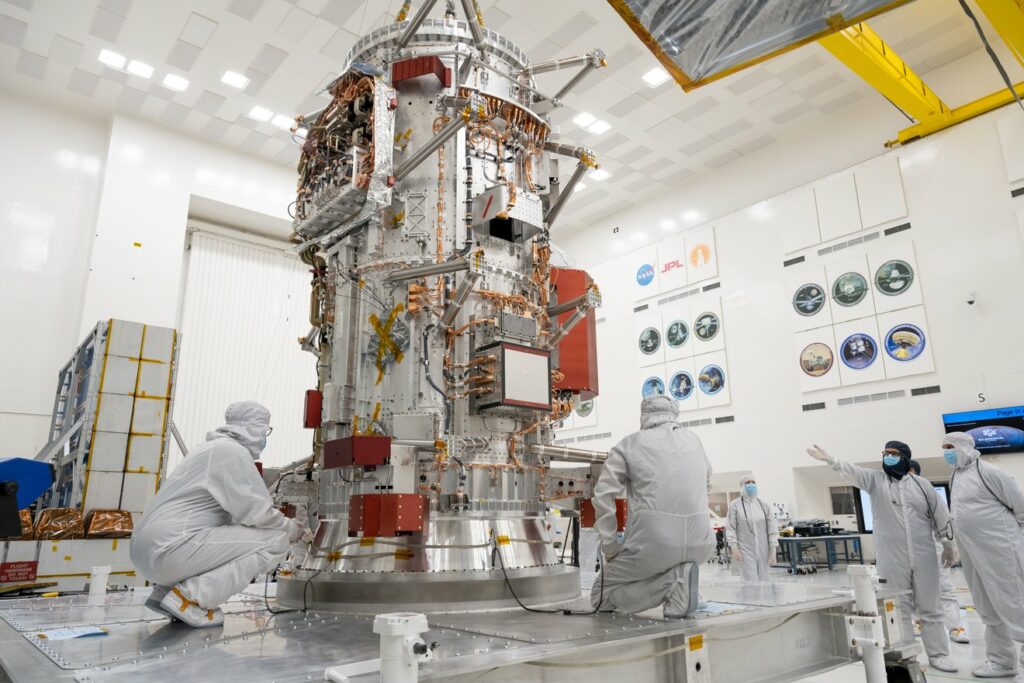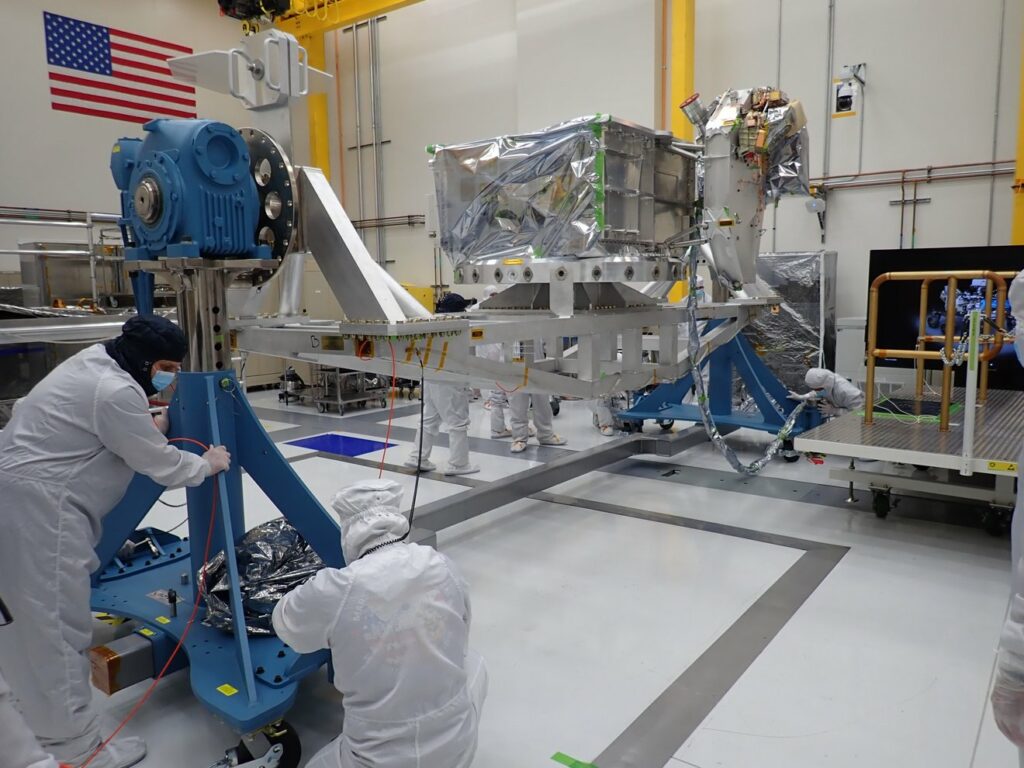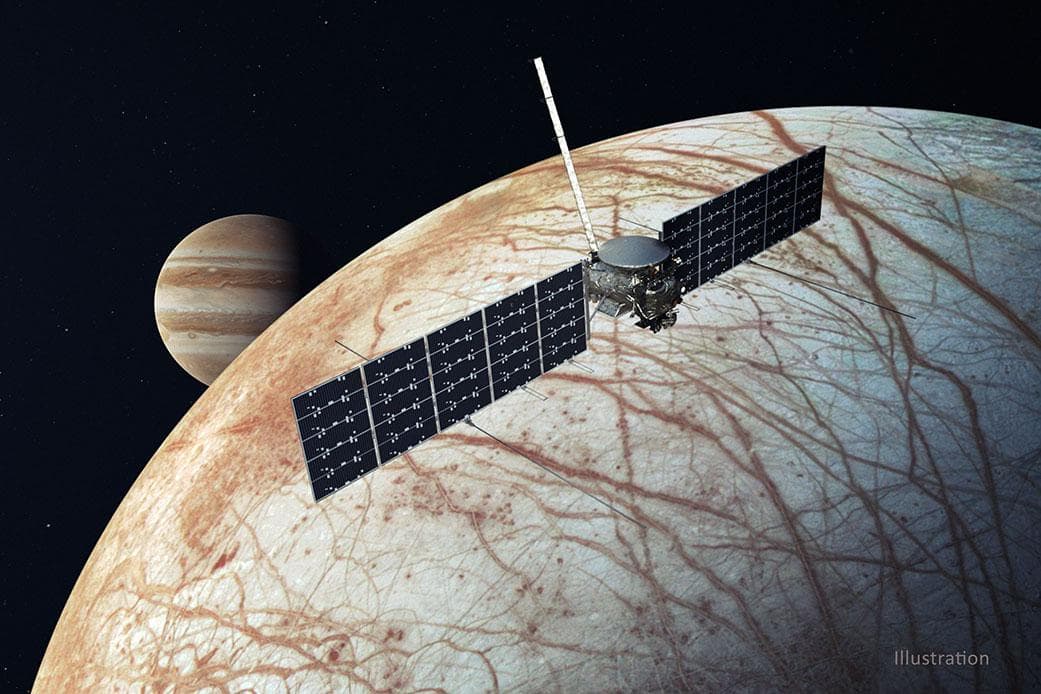Engineers of the Jet Propulsion Laboratory (JPL) have started assembling the Europa Clipper. This is stated in a message published on the official website of NASA.

The Europa Clipper platform was delivered to the JPL assembly shop this spring. It consists of a pair of nested aluminum cylinders with threaded holes for mounting payloads — scientific instruments, sensors, electronic components, wiring, antennas and solar panels.
The height of the platform is 3 meters, the diameter is 1.5 meters. Inside it there are two tanks — one with fuel, the other with an oxidizer. Their contents will be delivered to a group of 24 engines, where they will be mixed to create a controlled chemical reaction that forms thrust. The engines will be used both for large maneuvers (for example, entering the orbit of Jupiter) and small corrections of the course and orientation of the spacecraft.
Europa Clipper Assembly
At the moment, JPL engineers have already installed several scientific instruments on the Europa Clipper platform. Among them are a plasma detector, a wide-angle camera, an ultraviolet spectrograph and a device for measuring thermal radiation.

In the near future, a storage facility will also be installed on Europa Clipper, inside which the electronics controlling the device will be placed. It is designed in such a way as to withstand the effects of the very powerful radiation belts of Jupiter. In addition, engineers have started wiring installation. When unfolded, its length is 640 meters.
JPL plans to complete the assembly of the device by the end of 2022. After that, it will undergo a series of tests designed to certify its readiness to withstand the vibrations that will occur during its launch and stay in outer space.
Europa Clipper Launch Date
Europa Clipper will be launched in October 2024 by a Falcon Heavy rocket. The spacecraft will enter a permanent orbit around Jupiter in 2030.

The goal of the mission is Europa — the smallest of the four Galilean moons of Jupiter, covered with an ice shell, under the many kilometers of thickness of which a global ocean containing more water than all the oceans of the Earth should be hidden. During a series of five dozen close flights Europa Clipper will have to collect detailed information about this unusual world. Scientists hope that this information will help to answer the question of whether the subsurface ocean of Europa is capable of supporting life.
According to https://www.jpl.nasa.gov
Follow us on Twitter to get the most interesting space news in time
https://twitter.com/ust_magazine

